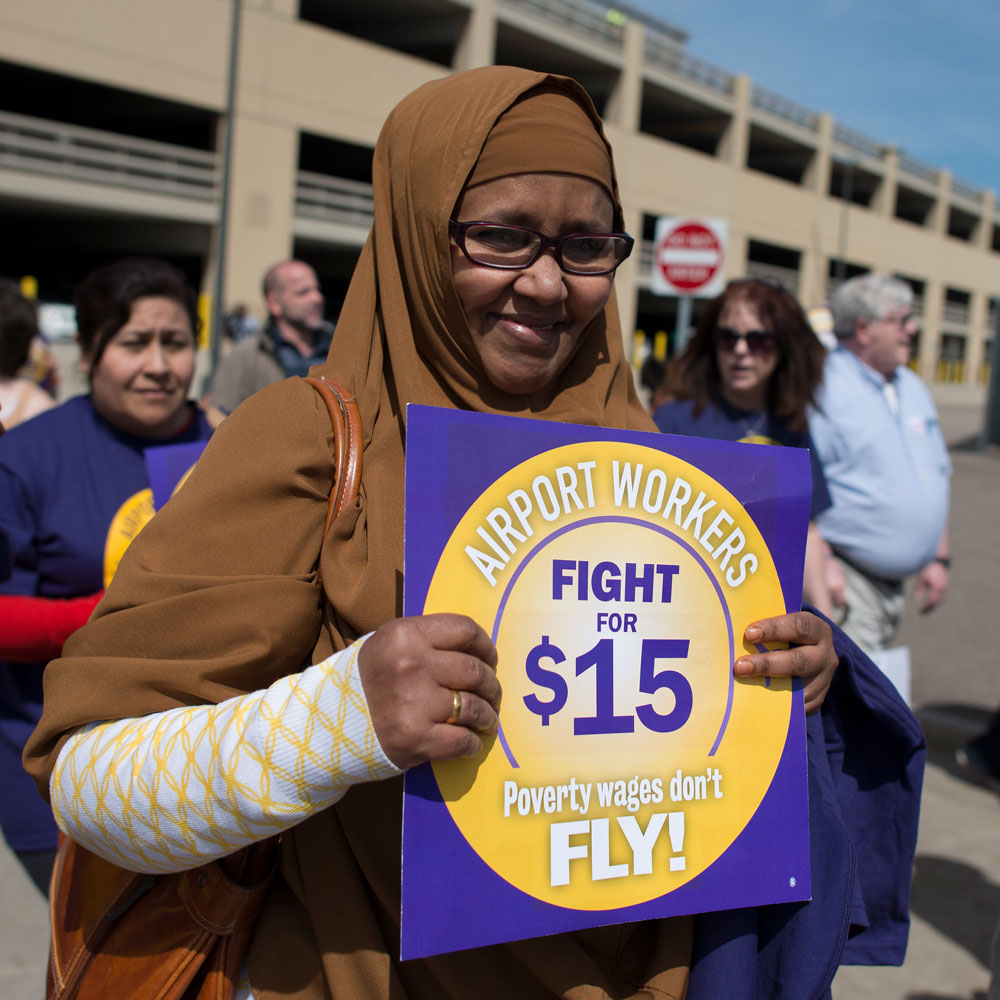
July 18, 2019; New York Times
Yesterday, the US House of Representatives vote to raise the federal minimum wage to $15 an hour by 2025. The bill, note Sheryl Gay Stolberg and Jenna Smialek in the New York Times, would more than double the existing federal minimum wage, which is $7.25 an hour. A person who works 40 hours at the federal minimum wage today earns about $15,000 a year—an amount, Stolberg and Smialek note, which is “$10,000 less than the federal poverty level for a family of four.” The US minimum wage has not been raised since 2009. Since the first minimum wage was passed in 1938, the country has never gone as long without an increase as it has now.
The measure, House Resolution 582, officially titled the Raise the Wage Act, passed 231–199, mostly on a party-line vote. Three Republicans crossed party lines to vote in favor of the bill, while six Democrats crossed party lines to vote no. The bill has little chance of passing the Senate and being signed into law. However, as Stolberg and Smialek point out, “it previews what Democrats would do if they captured the Senate and the White House in 2020.”
That said, even in the Democrat-led House, passage wasn’t smooth sailing. Speaker Nancy Pelosi had hoped to have the bill passed back in February, but to get the full support of her caucus required some political deal-making. Originally, the bill called for reaching $15 an hour by 2024; the amended bill pushed that date back a year to 2025. Additionally, the bill contains a provision authorizing a study of the measure’s effects after it has been in place for two years.
Were the bill to become law, the minimum wage schedule would be the following:
- 2020: $8.55 an hour
- 2021: $9.85 an hour
- 2022: $11.15 an hour
- 2023: $12.45 an hour
- 2024: $13.75 an hour
- 2025: $15 an hour
- 2026 and after: indexed to inflation
Of course, raising the minimum wage could have major impacts across the nonprofit sector, particularly for nonprofits that serve low-income Americans. Who earns minimum wage salaries today? A study published by the Economic Policy Institute (EPI) earlier this year lays the main data out.The bill also contains other provisions—phasing out existing “sub-minimum wages” currently authorized for tipped workers (a meager $2.13 an hour), a youth (under 20) minimum wage of $4.25 an hour, and the phase-out of sub-minimum wages for disabled workers. As with the rise in the standard minimum wage, the rise in minimum wages for these workers is phased in over a multi-year period.
Sign up for our free newsletters
Subscribe to NPQ's newsletters to have our top stories delivered directly to your inbox.
By signing up, you agree to our privacy policy and terms of use, and to receive messages from NPQ and our partners.
- Fewer than 10 percent are teenagers
- More than half are prime-age adults between the ages of 25 and 54
- More than half (58 percent) are women
- 60 percent work full time
- Nearly half (44 percent) have some college experience
- 28 percent have children
The EPI report also notes that 38 percent of Black workers and 33 percent of Latinx workers would get a raise if the federal minimum wage were increased to $15 an hour.
Of course, the federal bill builds on existing momentum at the state and local level by the Fight for $15 movement. Stolberg and Smialek report that a total of 29 states presently have minimum wages that exceed the federal level. Additionally, they note that, “Seven states have now passed legislation to gradually raise wages to $15, and cities including San Francisco and New York City already pay that much.… Companies have even joined in, with corporations including Amazon and Target raising their base wages to $15.”
Stolberg and Smialek themselves observe that the bill’s passage “shows the power of grassroots activism.” The authors quote Terrence Wise, a 40-year-old who earns $12 an hour at McDonald’s in Kansas City, Missouri, and who is a longtime activist in the Fight for $15 movement. “What we’re doing is working,” says Wise. “We’re a powerful voting bloc, and we will take that power to the ballot box.”
The impact of a raise to $15 an hour would be highly significant, although calculating the exact impact is challenging. A recent Congressional Budget Office (CBO) report estimated that the bill would pull 1.3 million Americans out of poverty and raise the wages of 27 million workers.
Controversially, the CBO report suggests unemployment could go up by 0.8 percent or 1.3 million workers. Uncertainty, however, is high. The authors write that, “There is a two-thirds chance that the change in employment would be between about zero and a decrease of 3.7 million workers”—a huge range that really says it is unclear how employment would be affected.
A July 2019 report from the Institute for Research on Labor and Employment at the University of California, Berkeley examines this issue with a focus on “high impact” areas where low average wages increase the impact an increased minimum wage would have. For example, Fresno has relatively low wages, but a high minimum wage, because it’s in California. The economists’ main finding: “We do not detect that minimum wages decrease employment or hours in low or high impact areas. Minimum wage increases do, however, reduce poverty rates among households and children.”—Steve Dubb












